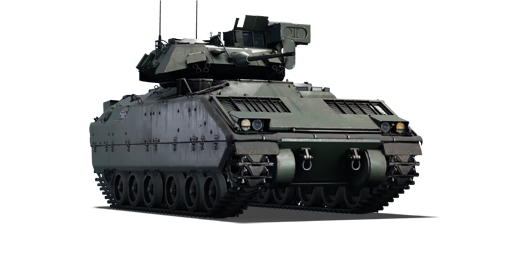The search for the ideal mechanized infantry combat vehicle (MICV) in the US military began as early as 1964, but design dissatisfaction and the Vietnam War complicated the procurement process while introducing new requests in what the US wants in their infantry fighting vehicle (IFV). A breakthrough to the final design was made when the FMC Corporation designed XM723 MICV was considered for the vehicle of choice for the IFV as the XM2 IFV, though the design was complicated again by having to also fit with the US Cavalry requirement as the XM3 Cavalry Fighting Vehicle (CFV). Following evaluations and criticism of the overall program, the XM2/3 was provided production approval in January 1980 as the M2 and M3 Bradley. Though both the infantry and cavalry variant shared similar exterior looks, the cavalry differed with the infantry seat area configured to contain more ammunition and missiles for the M242 chain gun and TOW launchers. As improvements were introduced into the design, the original M2/M3 variants were designated with an "A0" suffix. Though some A0s were sent before the onset of Operation Desert Storm in 1991 (both M2A0 and M3A0 consisted of 19% of all Bradleys in theater), the A0s were more intended as attrition spares while the improved A1 and A2 variants were sent into combat.
Introduced in Update 1.85 "Supersonic", the M3 Bradley remains a relatively unique vehicle in the American lineup as an infantry fighting vehicle. Like in real-life, players would have to handle the Bradley's relatively large size alongside main battle tanks and its paper-thin armour against both kinetic and chemical shells. The mobility is nothing spectacular to write home about either aside from being able to get the Bradley from point A to point B in a suitable manner. That said, the variety of firepower it is able to dish out makes it a lethal machine. The APDS shells the autocannon armament fires can penetrate more than a few tanks from the side armour, not to mention being able to make mincemeat out of lightly armoured vehicles. However, when facing tanks or faraway targets, the TOW missiles are a great piece of tool to have to ensure a critical hit even from far out, the only downside being the long missile launcher deployment time from when the Bradley is moving to coming to a halt.















